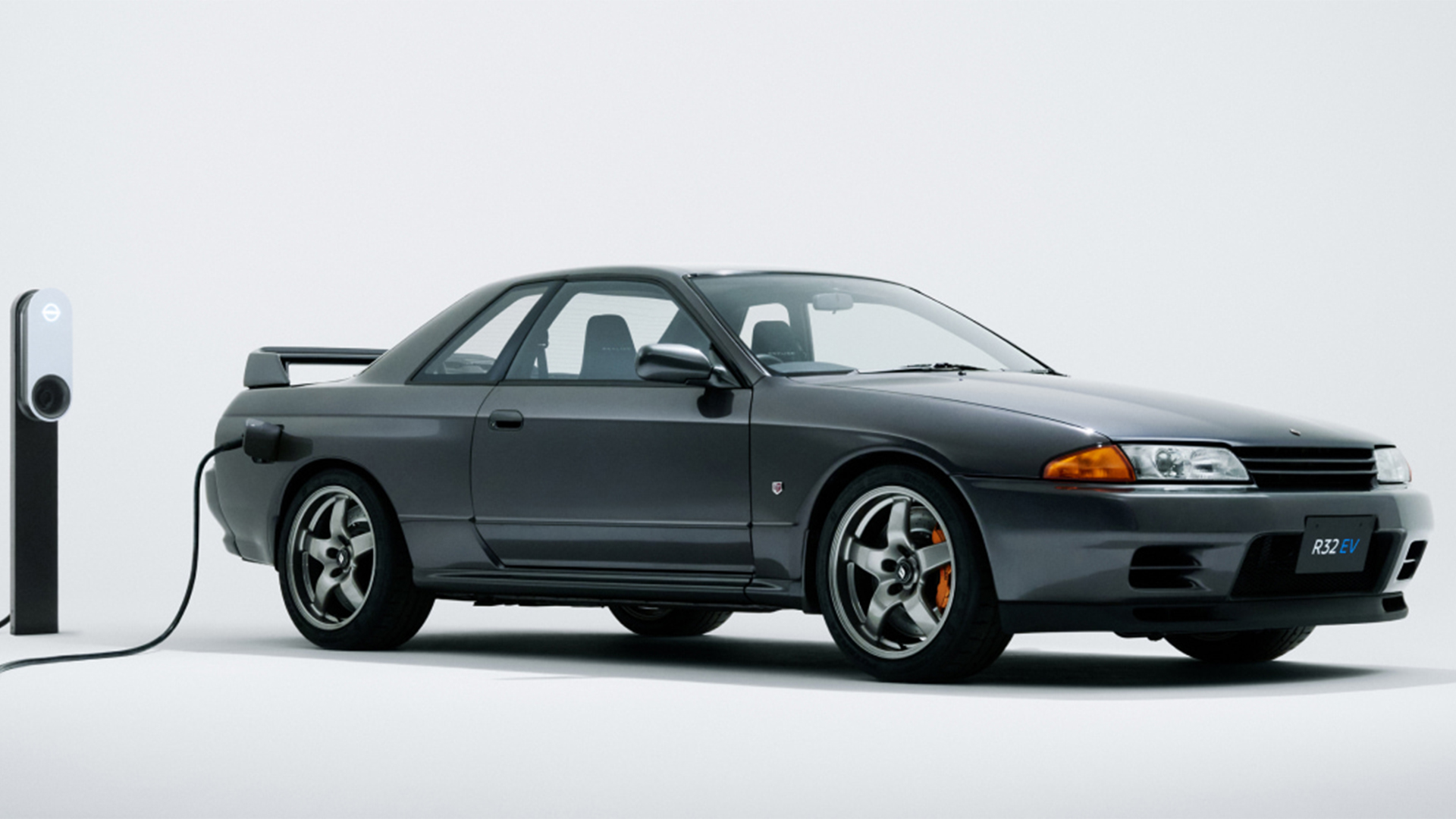
- Electric motors and a 62kWh battery from a Leaf Nismo power the 90s icon
- Project lead wants future generations to experience the unique drive
- Electric performance matches the 280hp of the original
In a move that will have the purists furiously hammering away at their keyboards, a long-time Nissan EV powertrain engineer has made it his personal mission to electrify arguably the Japanese marque’s most iconic car: the R32 Skyline GT-R.
That’s right, the performance machine that’s intrinsically linked to the best-selling Gran Turismo series has had its 2.6-liter, twin-turbocharged heart removed and replaced with a pair of 160kW electric motors that now power each axle.
But far from an exercise to raise a rabble on numerous internet forums, EV powertrain engineer Ryozo Hiraku believes it is important to “replicate the appeal of the R32 GT-R so future generations could experience it.”
In short, Hiraku is essentially admitting that modern EVs lack that special something that makes classic like the Skyline such a joy to drive, no matter what decade you were born in.
Plus, with most legacy automakers (including Nissan) committing to an all-electric future, it soon might not be possible for staff to embark on projects that aim to salvage combustion engine heroes of the past. There simply won't be the resources to do so.
The R32 GT-R project itself was a serious undertaking, with the team completely dismantling the 90s sports car and creating 3D renderings of individual parts, because as Hiraku points out, CAD wasn’t really a thing back in the early 90s.
What’s more, team members carefully synthesized the engine note of the original vehicle and pumped the soundtrack into the cabin to make it a more visceral driving experience.
Plus, there’s a Hyundai Ioniq 5 N-esque 'shift shock' that has been programmed into the paddle-mounted gear shift logic that replicates the mechanical jolting experienced when shifting up or down through a proper mechanical gearbox.
Rear seats were ripped out to make room for the Leaf Nismo battery pack, while larger brakes and rotors lifted from a R35 GT-R were added to beef up the stopping power of this 367kg heavier machine. As a result, the bespoke rims have grown from 16-inches to 18-inches to house everything.
Other than that, it’s a faithful electric replica that aims to distill the spirit of the original car into something that can be enjoyed daily in a world that is increasingly heading towards electrification.
There are no plans to commercialize a conversion kit, but instead, project leader Ryozo Hiraku says that it is important to “safeguard” the legacy of cars like the R32 GT-R for future generations and this could be one way of doing it.
Analysis: Electrifying classics is a craze that’s catching on

There are an increasing number of businesses springing up that specialize in ensuring classic vehicles can continue to be used by swapping their internal combustion engines out for modern electric powertrains.
Electrogenic in the UK, for example, already manufactures ‘plug and play’ kits for the Mazda MX-5, Series Land Rovers, Jaguar E-Types, air-cooled Porsche 911s and the iconic DeLorean DMC-12, which I’ve driven.
These kits are sent to a certified installer on a pallet, making the swap relatively painless, quick and borderline affordable, while customers can go as wild as they want with bespoke conversions, should their pockets be deep enough.
The owners of said classic can choose to store their internal combustion engine, should they want to swap things back, but the general idea is that it makes these iconic machines much easier to live with and useable in places like London, where strict emissions regulations now pretty much ban anything that produces CO2.
It is a similar story in the US, where companies like Gateway Bronco are shoehorning powerful EV motors and battery packs into classic Ford Bronco 4x4s with stunning effect. Everrati is another company making waves in the resto-mod scene, electrifying everything from the Mercedes-Benz SL to an 800hp Ford GT40.
Electrifying celebrated automotive idols like this ensures they get used, rather than stored in a garage, museum or private collection, where they will never get to do what they do best – making passers-by stop in their tracks and double-take an exterior that’s since evanesced thanks to today’s safety-focussed cookie-cutter car designs.







